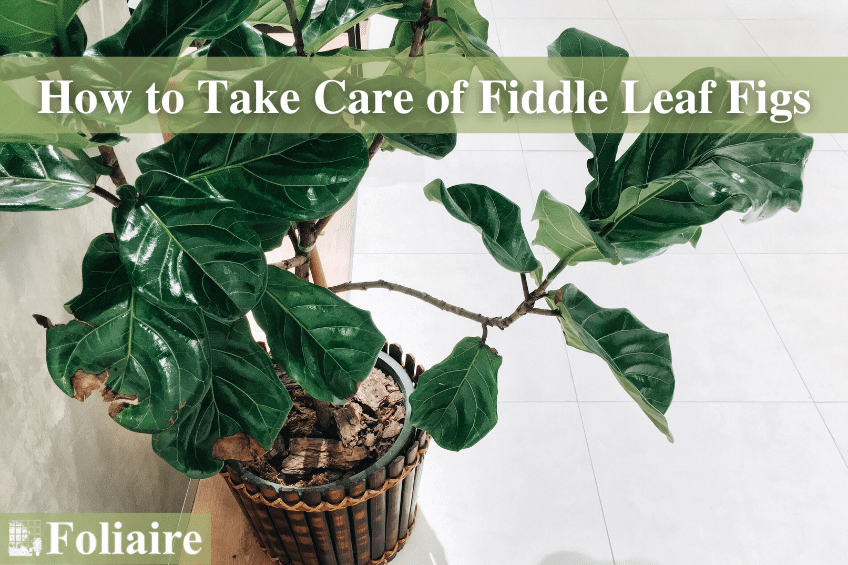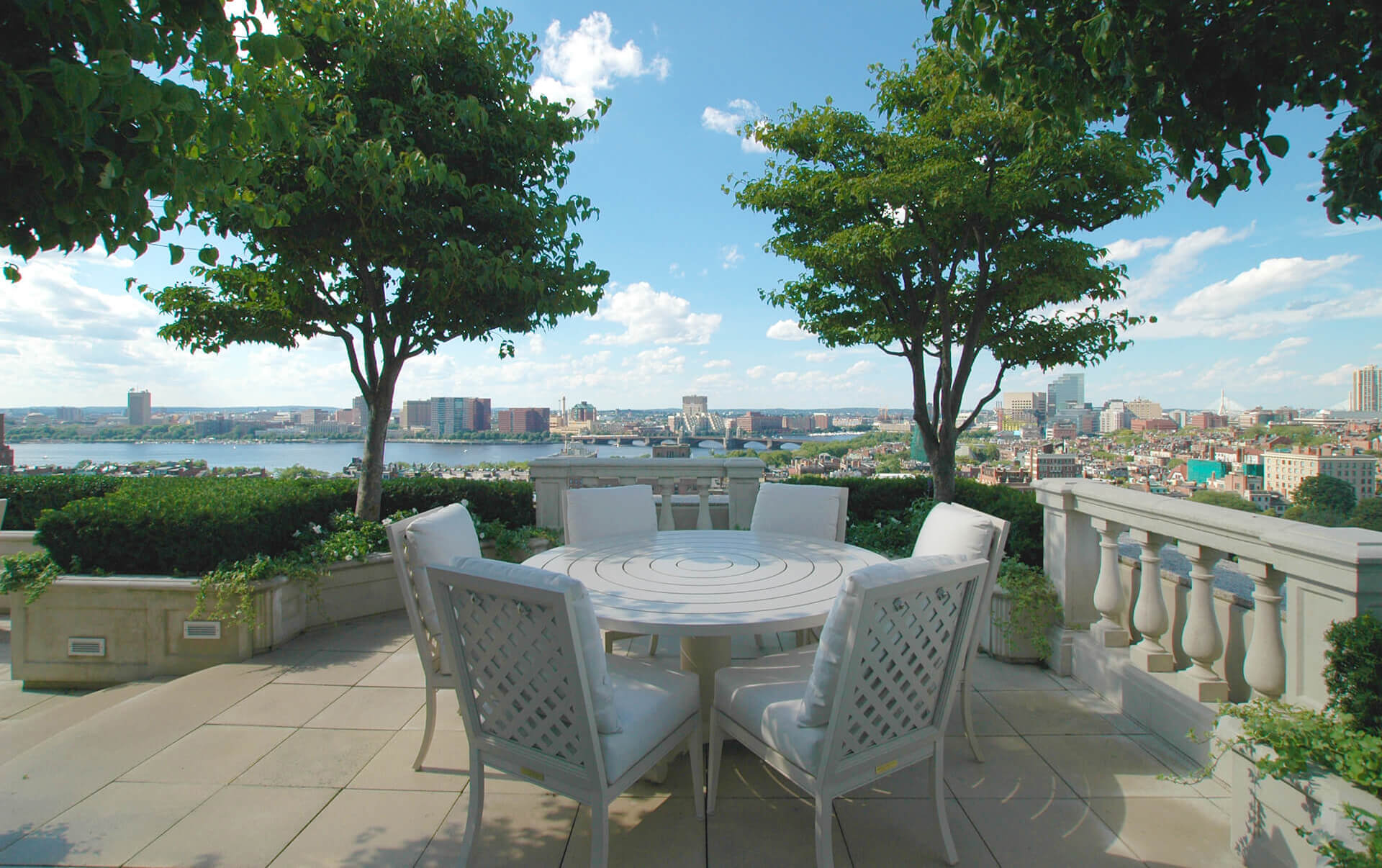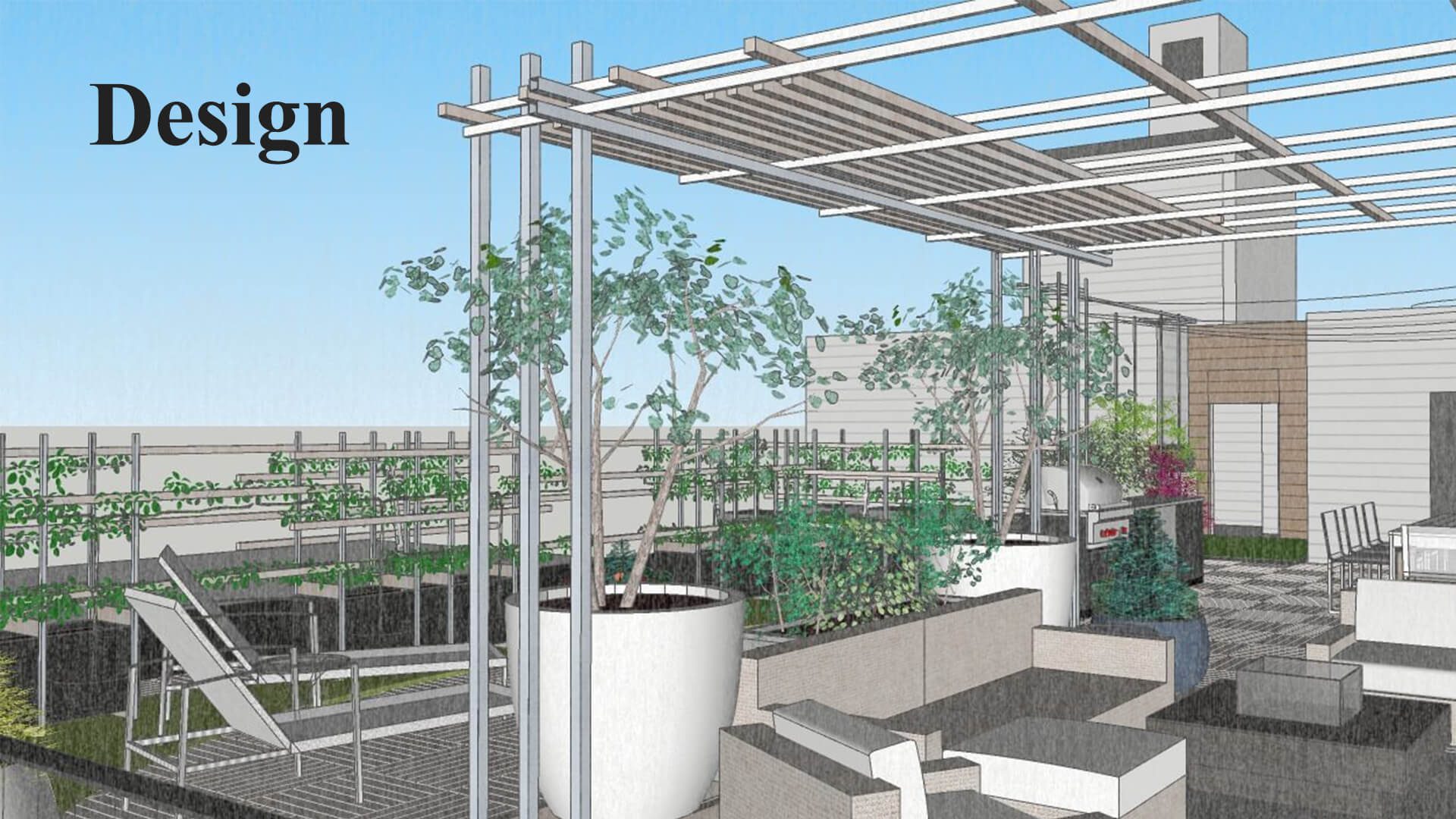Plant Care Tips: How to Take Care of Fiddle Leaf Figs
Fiddle leaf figs are one of the best indoor plants for anyone looking to add a striking addition to any room in their home. With its larger size and beautiful leaves, you’ll want to ensure you understand the top plant care tips for this exotic plant.
Keep reading to learn the best ways to preserve your fiddle leaf fig. We’ll help you avoid common problems associated with this popular plant.
What You’ll Learn:
Light
When finding the correct position for your fiddle leaf fig, ensure your indoor plantscaping sees this plant placed by a window. It needs to receive some direct light daily, so ensure your window is unobstructed. The window doesn’t need to face any direction, so don’t worry if your window isn’t south-facing. Remember that you shouldn’t place it outdoors since full sunlight will be too much for the plant.
Soil
To look after your fiddle leaf fig, you’ll need to plant it in a well-draining potting mixture. It should ideally be rich in organic matter, such as peat-based soil. The soil should be evenly moist, which will help keep the roots hydrated without getting too wet.
Watering
When it comes to indoor plant maintenance and watering for fiddle leaf figs, ensure you water them roughly once a week. This step will depend on the size of your plant, so adjust the amount of water you give it. For example, a six-foot-tall plant may need about ¾ of a gallon weekly. If the top inch of the soil feels dry to you, it needs watering when looking after exotic plants. Slowly water all around the pot to effectively water the entire root ball.
Do you need help revitalizing your outdoor garden?
Temperature
The key to successful indoor plantscaping depends on many factors, including the average temperature of the place where the plant will live throughout the year. Keep your fiddle leaf figs in temperatures of roughly 55 to 70 degrees Fahrenheit for best results. The most important thing is to place this plant indoors so it won’t receive heat or hot air from a fan or heating vent.
Fertilizer
Applying fertilizer is a good idea when taking care of any of the best indoor plants, but you’ll want to be cautious with how much fertilizer you use on your fiddle leaf figs. Avoid using too much fertilizer at once on the plant, or you may find that you’ve undone all of the good work of the plant care tips we’ve shared so far. A slow-release “pelletized” fertilizer is a good option for the spring and summer of this type of plant. This type of fertilizer sits on the top layer of the soil, where it will last for a few months before you need to consider giving the plant more. Consult the instructions on the fertilizer for the correct amount to apply.
Potting and Repotting
Take great care when potting or repotting your fiddle leaf fig. You should repot your plant when it outgrows its previous pot, which is generally just every two or three years for this exotic plant. The best type of pot for a fiddle leaf fig is a tighter container with many drainage holes. This plant can easily adapt to any shape and type of planter, but make sure you water it generously upon repotting it to help it settle into the new pot.
See how we can transform your interior garden today!
Common Problems
It’s important to be aware of the common indoor plant maintenance issues that may crop up. Overwatering is one of the biggest issues we see with fiddle leaf figs, resulting in fungal infections or root rot. You may notice that your plant develops spots or dropping leaves, indicating a bigger issue with your plant care. If just the edges of the leaves are turning brown, that’s an indication that the plant isn’t getting enough water.
Drying Leaves
Many of the leaves on your fiddle leaf fig will eventually turn brown and dry. While this is part of the normal process of aging leaves, you should certainly be concerned if this happens to the whole plant at once. If you move your plant to a new area of your home, you may find that it may take a little time to adapt to its new location. You can pluck off any dried and old leaves, but consider whether you are following our indoor plant maintenance tips if you are concerned there is a greater issue. Ensure you are offering the plant enough water and not placing it in sunlight outdoors, as these two factors could be the reason for your browning leaves.
Pest Infestations
As with many exotic plants, pests may decide to give your fiddle leaf figs a visit at any time. You can treat the infestation if you catch this issue before it’s too late. Armored scale insects, spider mites, and mealy bugs are the three most common infestations. Pests may sometimes appear blemishes on the leaves, so use a magnifying glass to check out the issue. Smaller pests can easily blend into the leaf, but the sooner you treat this problem, the more likely you’ll be to preserve your plant.
Key Takeaways
By following these indoor plant care tips, you can ensure your plant lives for many years. These are very long-lasting and beautiful additions to any indoor plantscaping design. However, you’ll want to ensure you give them the correct water, sunlight, and temperature conditions to grow and thrive. While there are a few common issues you need to be aware of, they are generally quite low-maintenance plants that are easy to look after. You’ll find they make a very dramatic addition to any living space, which is why we are seeing more and more homes across the country put these plants on display.
Ready to unlock your garden’s full potential?
View Our Other Plant Care Tips
- Lawn and Garden
- Tropical Plants
- Ferns
- Philodendron Plants
- Why Are My House Plants Dying?
- How to Find the Best Garden Decor
- Top 10 Pet-Safe House Plants
Boston’s Plantscaping Specialists
Foliaire is a full-service interior and exterior greenscape design-build firm in Boston’s historic South End. For 40 years, we’ve provided award-winning plantscaping services in the Boston Metro area.
We customize and plan our roof garden projects and interior plantscaping to fit your unique space and tastes. That’s how we’ve built a reputation of unparalleled style and elegance for corporate plantscaping and residential community projects.
In addition, we’ve received several environmental design awards and have appeared in several publications. You can find us in Architectural Digest, House and Garden, Horticulture, and Interiorscape.
Follow us on social media @Foliaire for more valuable plant care advice:




